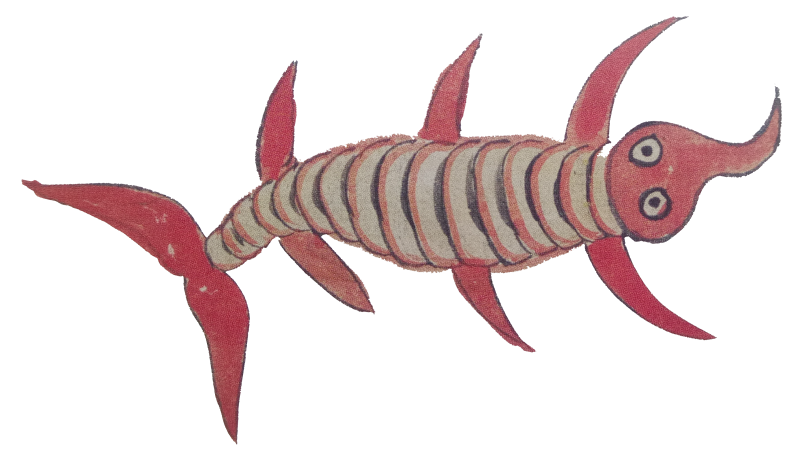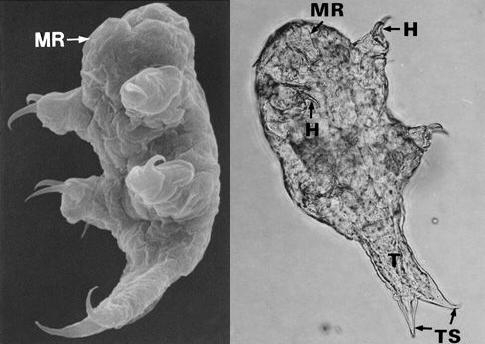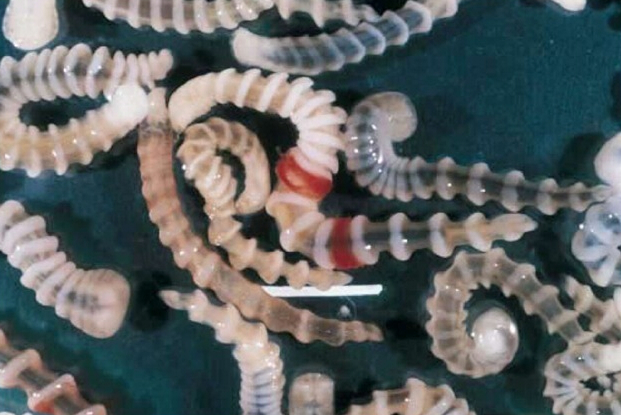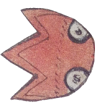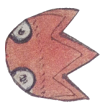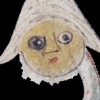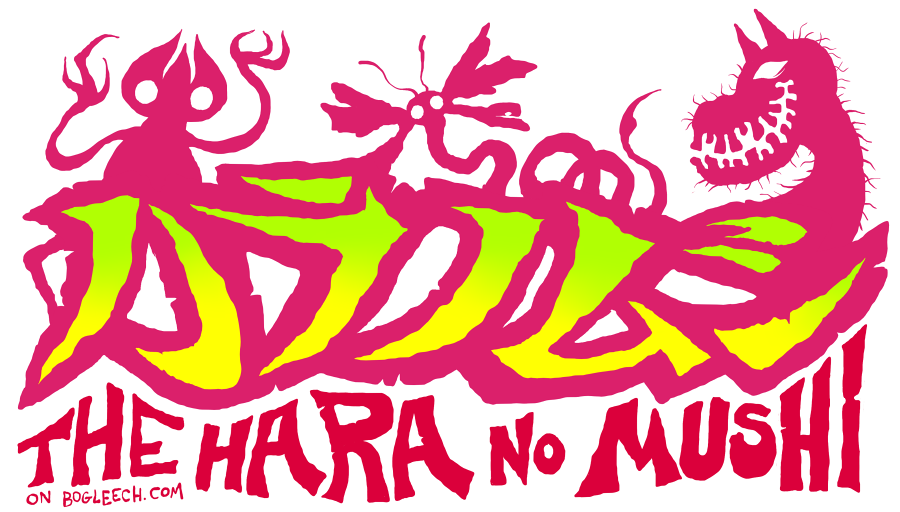
DAY EIGHT: AKUCHUU
("Bad Bug")
Written by Jonathan Wojcik, Researched and Translated by Rev Storm
Design Review:
Wicked though it may be, Akuchuu is one of the cutest in the book thanks not only to those little round eyes but the fact that its wiggly, pointed proboscis ends up looking like one of those fuzzy worm toys. Aesthetically the pale maggot-like body with red extremities is a very cool look as well, reminiscent of Gyoshuu from our first entry as well as some other, upcoming bugs!TODAY'S REAL WORLD PARASITE:
Pentastomids
Akuchuu is so vague that it could practically be any parasite in the world, and it probably isn't meant to be one in particular. It does, however, have a very distant doppelganger in the animal kingdom, by which I mean there is precisely one internal parasite us humans can contract that actually does, in fact, possess clawed legs.
What you're seeing in these photos are the microscopic larvae, which in this species possess just four legs and a sharp tail, but there are indeed some which possess six legs. So they're insects, right? Nope! Nothing else about their anatomy matches the Insecta, and it's currently believed that they're a group of Crustacea, though even a relationship to tardigrades has been proposed in the past.
No known species of Pentastomid naturally infects humans, but several species infect dogs in certain parts of the world, and accidentally make the jump to dog owners with some regularity. HERE you can read a detailed paper on pentastoma found in a man's heart, and HERE is an account of one clambering around in someone's eyeball. Just like tapeworm larvae, they tend to get confused in a human body and wander around a little too much for their own good.
It feels especially unlikely that the creator of the Hara no Mushi could have ever seen a pentastomid or even speculated on their existence, but isn't it wonderful that so many parasites exist in this world, we can still find one to match with every one of these critters thus far? Enjoy it while it lasts, since a couple to come are far too abstract for that to work out!
